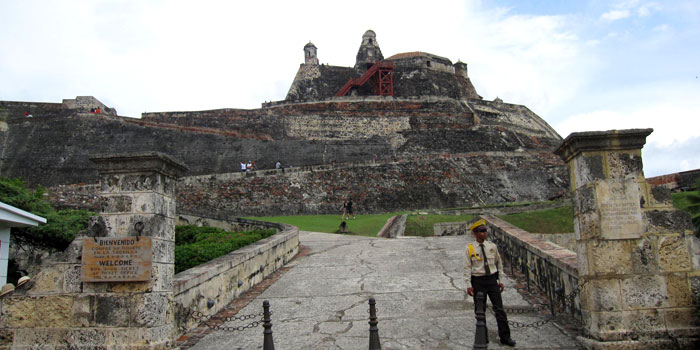
Castillo San Felipe de Barajas in Cartagena Colombia
Castillo San Felipe de Barajas is not to be missed. On my way to visit it, my taxi driver corrected me, “No es castillo. Es fuerte.” It’s referred to as Fort San Felipe and Castillo San Felipe.
Castillo San Felipe is a fortress and one of the reasons why Cartagena is on the UNESCO World Heritage Site map.
The fortress has geographical and military significance. It’s an imposing and towering rocky figure with three levels that was built by the Spanish over a span of two centuries (from the 1500s through the 1700s) to protect the east side of Cartagena’s maritime trade port from invasions and pirating. Standing 130 feet high, the fortress is considered the best example of military architecture in the New World (Americas) built by the Spanish.
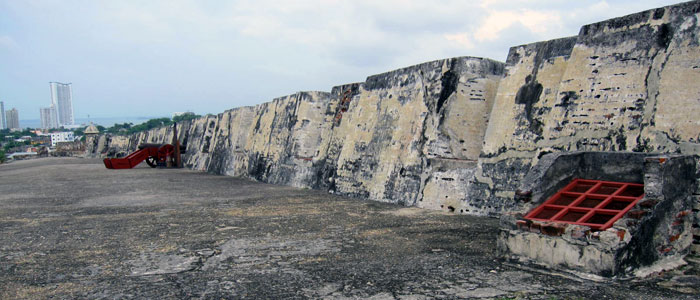
Castillo San Felipe second level with canons and bunkers
Castillo San Felipe is characterized by an intricate series of underground tunnels and bunkers throughout its wide base. At the top, it has garrisons, turrets, and canons.
From afar, Castillo San Pedro looks like an enormous mound of rock—maybe even a castle. As I roamed around, the fortress’ architectural intricacies and expansiveness were on full display. Starting at the entrance—the base—there is a long, long climb up the first level.
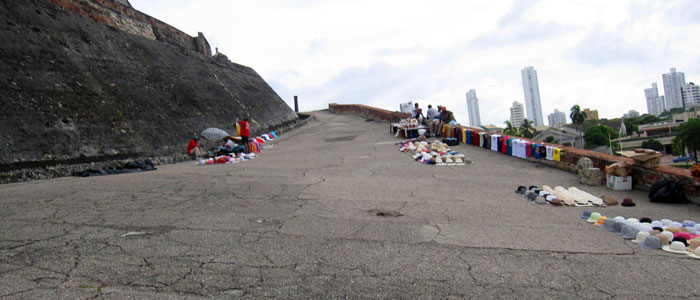
Vendors on first level of Castillo San Felipe, Cartagena
On the first tier, locals, like the wall in Old City’s Centro area, line up with souvenirs. As I passed them, they yelled out “Rocky!” Assuming that was from the climb up. From there, a nice panoramic view of Cartagena’s port city emerges.
Just beyond is a red gate up to the second tier. The walkway turns into a red bricks. When I turned around, I saw the city’s breathtaking harbor and skyline.
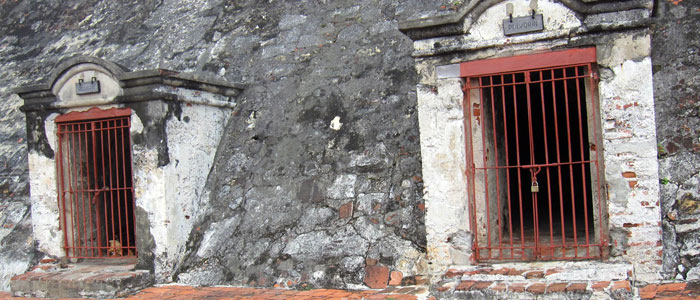
Gates on second level in Castillo San Felipe
The second level had wide paths and thick, thick walls with lookout points where canons stood resting their rusty barrels. On this level too were metal doors at the entrances to tunnels and bunkers. It was dark and a little eerie beyond the metal doors but you just wanted to go down one of the tunnels to explore!
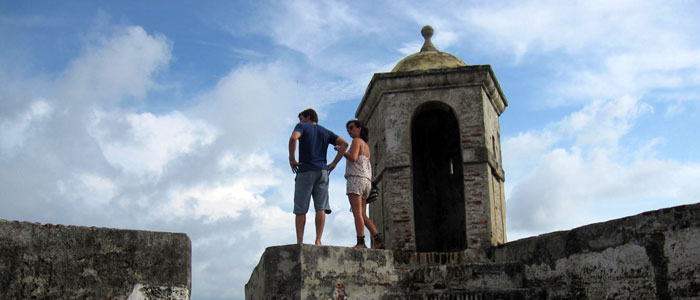
Top of Castillo San Felipe, Cartagena
On the third level, you can’t miss the Colombian flag and tower. It’s a climb up a narrow set of steps. The third floor had more canons, a gift shop, and 360-degree view of Cartagena. There was a red bridge with an amazing view of Cartagena’s harbor and city, particularly Bocagrande. It’s a must see when you’re in Cartagena.
Cost: Free for folks in wheelchairs but normally 15,000 COP
2,500 COP for a bottle of water, which is actually fairly cheap.
Accessibility: It’s a climb with long inclines. Also, there are a long flight of stone steps to reach the top, third level.